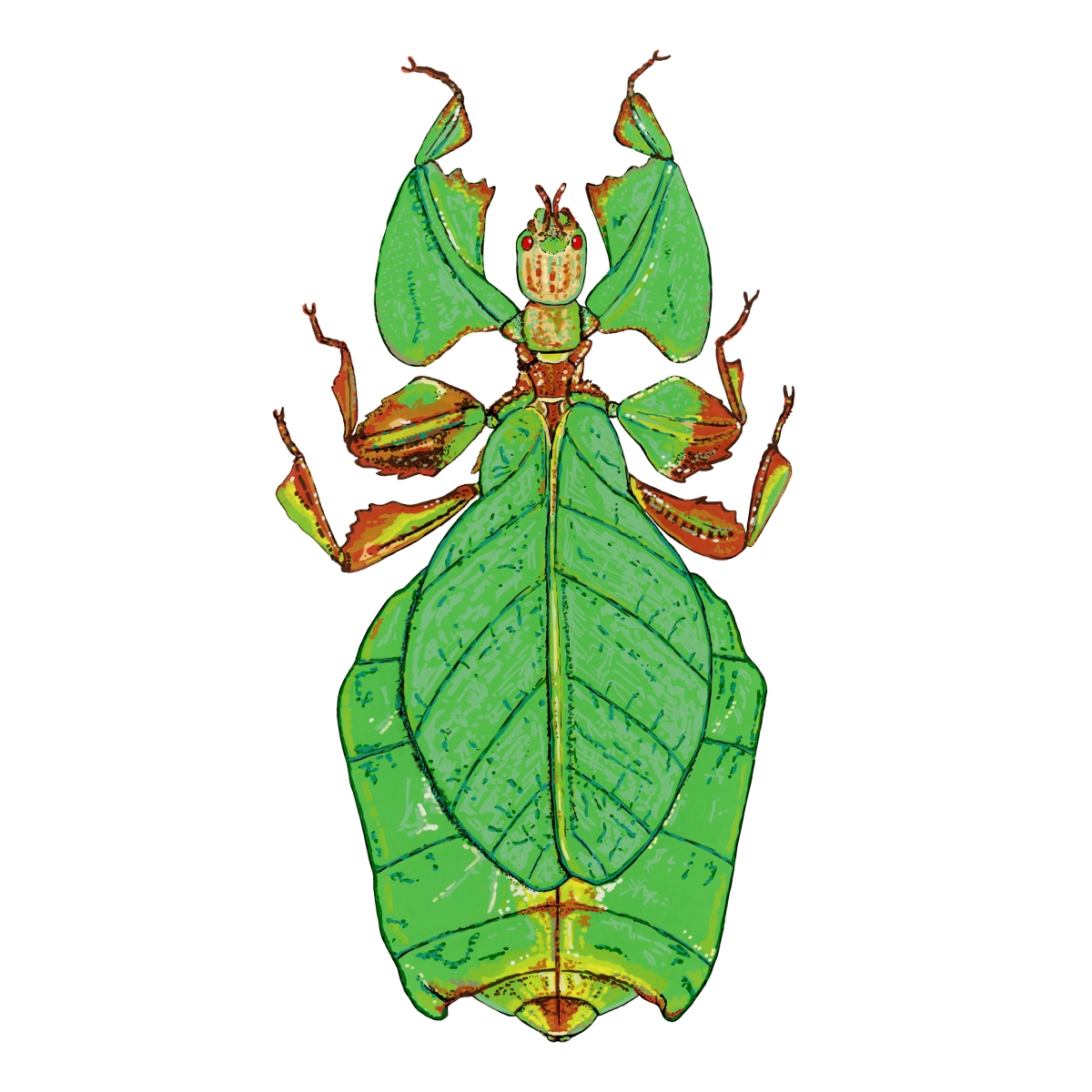Please scroll through to see every beetle or bug with little descriptions of them.
Hand drawn illustrations with Molotow acrylic paint markers and fine liners.
Pulchriphyllium Giganteum
The giant Malaysian leaf insect can reach sizes of 10.5cm. Neither a bug nor a beetle, they along with the stick insects are collectively known as the ‘ghost insects’ for the magnificent camouflaging they are able to employ to deter predators, mimicking their surroundings so perfectly. Their scientific classification is the rather splendid Phasmatodea, derived from the ancient greek meaning apparition or phantom. The females have a large elytra and are not able to fly as they lack hind wings, the males are quite different and have a much smaller elytra, and functional non-leaf like hind wings meaning they are able to fly. In captivity, the females don’t require the male to reproduce and do so through parthenogenesis (a form of asexual reproduction). It is still not known how they reproduce in the wild. Because the Pulchriphyllium giganteum is so well hidden, it wasn’t classified until 1984 (by Burghard Hausleithner), and the male wasn’t classified until 1994.
Beetles are insects from the Coleoptera order. There are about 400,000 described species, making it one of the largest orders of insects. Their front pair of wings are hardened into wing cases, distinguishing them from other insects. The oldest known beetle, Coleopsis, is 295million years old, it is sadly now extinct.
Beetles make up a huge part of the world’s biodiversity, and as such their conservation is very important. Loss of habitat and biodiversity around the world impacts heavily on beetles. Beetles can have very specific habitats and long life cycles that can make them vulnerable. Because of this some species are highly threatened while others are feared already extinct. The presence of beetles can indicate how healthy the planet is, and we should encourage a love for beetles, and protecting their habitats can help us to protect the world from ecological disaster.
Bugs are insects from the Hemiptera order. They are true bugs, and share a common arrangement of piercing-sucking mouthparts. They are called the true bugs, because we often refer to other creepy crawlies collectively as bugs when they aren’t, for example the ladybug is actually a beetle! There are about 80,000 species of hemiptera. Many bugs are pests, to both humans and plants, however the climate catastrophe that humans have created has destroyed habitats and affected the global migrations of hempiterans. For example, rising global temperatures are correlated with the severity of potato leafhopper infestation, so increased warming may worsen infestations in future.
Here I have drawn bugs from Pentatomoidea (a super family in the Heteroptera suborder of the Hemiptera order) which includes stink bugs and shield bugs, jewel bugs, giant shield bugs, and burrower bugs.

















